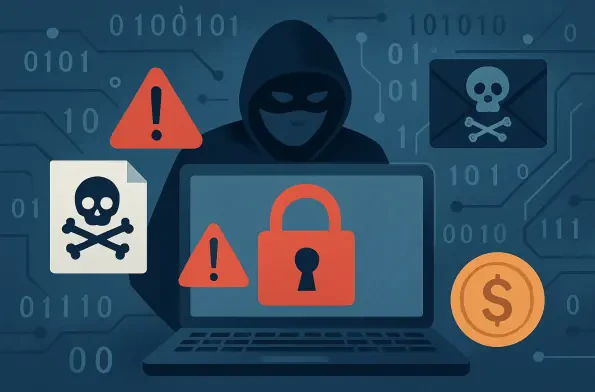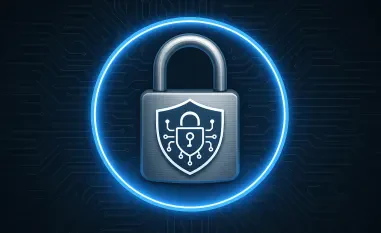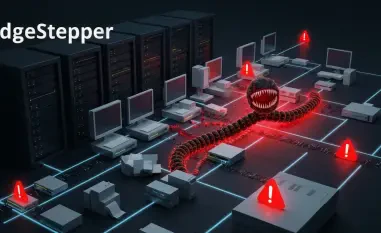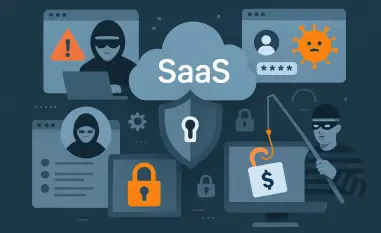In the ever-shifting landscape of cybersecurity, a new and alarming threat has emerged with devastating potential to disrupt organizations worldwide: DragonForce ransomware. Since its debut in late 2023, this sophisticated cybercrime operation has rapidly climbed the ranks of digital dangers, leveraging a Ransomware-as-a-Service (RaaS) model to empower affiliates with advanced tools and high-profit incentives. Known for targeting high-profile entities across diverse sectors, DragonForce has inflicted substantial financial and operational damage, positioning itself as a critical concern for security professionals. With a dark web portal dubbed “DragonLeaks” marking its ominous entry, the group’s adaptability and technical expertise have made it a formidable adversary. This article delves deep into the core of DragonForce’s operations, examining the specific targets they pursue, the intricate tactics they employ to breach networks, and the broader threats they pose to global cybersecurity, offering insights into how this evolving menace continues to challenge defenses.
Emergence and Evolution of a Cybercrime Powerhouse
DragonForce burst onto the scene with a chilling presence in December 2023, launching a dark web platform that signaled its intent to dominate the ransomware ecosystem. Initially speculated to have connections to hacktivist origins, the group swiftly transitioned into a profit-driven enterprise, shedding ideological ties for financial gain. By the current year, it has solidified its status as a leading RaaS platform, attracting a network of skilled affiliates, including those displaced from dismantled ransomware operations. Offering commission rates as high as 80% on ransom payments, DragonForce has built a lucrative business model that mirrors legitimate corporate structures. Beyond financial incentives, the group provides a suite of advanced tools, including customizable ransomware builders that allow attackers to tailor encryption settings and ransom notes. This blend of high rewards and technical innovation has fueled its rapid growth, making it a persistent challenge for cybersecurity defenses worldwide and a symbol of modern cybercrime’s alarming sophistication.
A further testament to DragonForce’s evolution is its introduction of white-label ransomware services, enabling affiliates to rebrand payloads for additional fees. This move highlights a strategic push to expand market reach within the underground economy. The group’s infrastructure, designed for ease of use, includes automated features that lower the barrier for less technically adept cybercriminals to join their ranks. By repurposing leaked code from notorious ransomware families such as LockBit 3.0 and Conti V3, DragonForce ensures rapid deployment of effective attack mechanisms without the burden of original development. This calculated approach not only accelerates their operations but also diversifies the threat landscape, as affiliates gain access to multiple variants tailored for different targets. The seamless integration of business acumen with technical prowess underscores why DragonForce stands out as a leader in the ransomware domain, posing a continuous risk to organizations unprepared for such advanced adversaries.
High-Value Targets and Devastating Impacts
DragonForce’s choice of targets reveals a deliberate strategy to maximize both financial returns and societal disruption, focusing on high-profile organizations that hold significant value. Government entities, retail giants, and critical infrastructure providers have all fallen into their crosshairs, with notable incidents showcasing the scale of their impact. The Ohio Lottery and the Palau government are among the public sector victims, while UK retailer Marks & Spencer endured a staggering £300 million loss in a recent attack during April of this year. Such breaches often result in months of operational downtime, crippling day-to-day functions and exposing sensitive data to public leak sites if ransoms are unpaid. This pattern of targeting entities with substantial resources and public visibility amplifies the pressure on victims to comply with demands, while also sending a clear message about DragonForce’s capability to strike at the heart of essential services and major industries.
The broader implications of these attacks extend far beyond immediate financial losses, raising critical concerns for national security and economic stability. When critical infrastructure is compromised, the ripple effects can disrupt entire communities, as essential services grind to a halt. The reputational damage inflicted on targeted organizations often proves just as costly, eroding customer trust and investor confidence in the aftermath of a breach. DragonForce’s focus on sectors with high public impact ensures that each successful attack garners attention, further emboldening their affiliates to pursue even larger prey. This calculated selection of victims illustrates a deep understanding of leverage in cybercrime, where the stakes are not just monetary but also societal. As these incidents mount, the urgency for robust cybersecurity measures becomes undeniable, with the need to protect vulnerable sectors against such targeted threats growing more pressing by the day.
Sophisticated Attack Vectors for Network Infiltration
DragonForce employs a diverse arsenal of methods to gain initial access to target networks, demonstrating a keen awareness of both technological and human vulnerabilities. Phishing campaigns, particularly spear-phishing, stand out as a primary tactic, with carefully crafted emails designed to deceive specific individuals into executing malicious attachments or clicking harmful links. These socially engineered attacks exploit trust, often impersonating legitimate sources to bypass suspicion. Additionally, the group capitalizes on unpatched systems by targeting known vulnerabilities, such as Log4Shell and multiple Ivanti Connect Secure flaws, to infiltrate networks lacking timely updates. This reliance on exploiting software weaknesses highlights the critical importance of maintaining up-to-date defenses, as even a single overlooked patch can serve as an open door for attackers to slip through undetected.
Another layer of DragonForce’s infiltration strategy involves exploiting remote access points and trusted relationships to devastating effect. Remote Desktop Protocol (RDP) and VPN attacks are common, often facilitated by compromised credentials obtained through brute-force methods or credential stuffing. Beyond direct access, the group has been known to leverage managed service provider (MSP) relationships, using these trusted connections as a gateway to multiple client environments from a single breach point. Instances of accessing networks via leftover remote management software from prior providers further illustrate their knack for finding overlooked entry points. This multi-faceted approach ensures a high success rate, as it targets various weak links within an organization’s ecosystem. The cascading risks of interconnected systems become evident in such attacks, underscoring the need for stringent access controls and continuous monitoring to thwart these sophisticated intrusion attempts before they escalate into full-blown crises.
Operational Tactics and Evasive Techniques
DragonForce’s operational methodology is marked by a systematic approach that aligns with the MITRE ATT&CK framework, covering every stage of the cyber kill chain with precision. Initial access often hinges on exploiting public-facing applications or using stolen credentials for RDP and VPN entry, while execution relies heavily on social engineering to trick users into running malicious files. Once inside, attackers use tools like PowerShell for reconnaissance and command execution, ensuring they map out the network for maximum impact. Persistence is achieved through tactics such as scheduled tasks and registry modifications, alongside the installation of remote access software like AnyDesk to maintain backdoor entry. This comprehensive strategy ensures that even if initial defenses are breached, the group can retain control over compromised systems for extended periods, often going unnoticed until significant damage is done.
To evade detection, DragonForce employs advanced defense evasion techniques that complicate efforts to identify and mitigate their presence. Privilege escalation is a key focus, with attackers manipulating access tokens to achieve SYSTEM-level control, granting them unfettered access to critical resources. Files are often obfuscated, sometimes embedded with unique identifiers like specific text strings to throw off signature-based detection tools. By moving malicious payloads to system directories, they blend into legitimate processes, further reducing the likelihood of early discovery. This blend of technical sophistication and strategic patience allows DragonForce to operate under the radar, maximizing the impact of their attacks before victims can mount an effective response. The depth of their tactics reveals a group that not only understands network architecture but also excels at exploiting human error, making them a particularly elusive and dangerous adversary in the digital realm.
Addressing the Growing Ransomware Menace
Reflecting on the havoc wreaked by DragonForce since their emergence in late 2023, it’s clear that their sophisticated blend of technical innovation and organized cybercrime poses unprecedented challenges to global organizations. High-profile attacks on entities like Marks & Spencer, with staggering financial losses, alongside disruptions to government operations, paint a grim picture of the potential consequences of underestimating this threat. Their ability to adapt, repurpose existing ransomware code, and offer customizable tools to affiliates marks a troubling evolution in the ransomware landscape, where profit-driven motives fuel increasingly brazen operations. The systematic exploitation of network vulnerabilities and human weaknesses alike demonstrates a level of precision that demands equally meticulous countermeasures from those tasked with defending against such incursions.
Looking ahead, combating this persistent threat requires a multi-layered approach that prioritizes proactive defense and rapid response capabilities. Organizations must invest in regular software updates and patch management to close exploitable gaps, while employee training on recognizing phishing attempts can significantly reduce the risk of social engineering success. Implementing advanced monitoring tools, such as endpoint detection and response (EDR) systems, alongside network traffic analysis, offers a chance to catch malicious activity in its early stages. Collaboration between public and private sectors to share threat intelligence can further strengthen collective defenses, ensuring that indicators of compromise (IoCs) are disseminated swiftly. As DragonForce and similar groups continue to refine their methods, staying ahead necessitates not just reaction but anticipation, building resilient systems capable of withstanding the next wave of ransomware innovations with fortified resolve.













